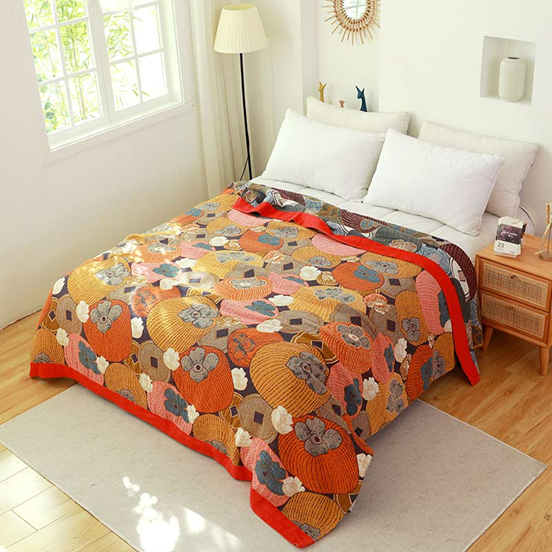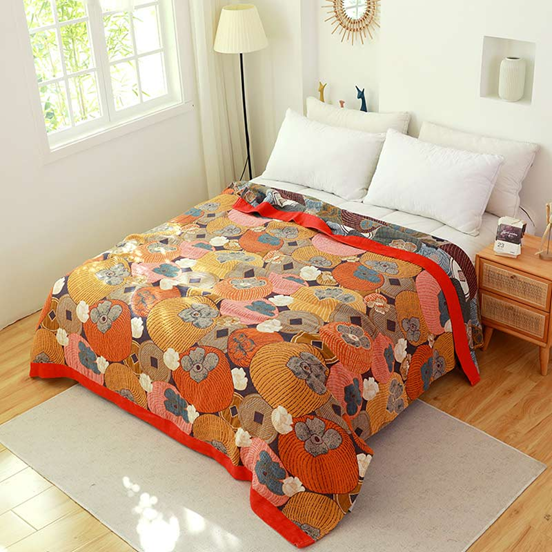As the seasons change, the comfort of our quilts becomes more crucial than ever. Yet, have we truly pondered the lifespan of these daily companions? Join us as we unravel the intricate world of quilt longevity, its impact on our health, sleep quality, and ways to ensure they last for years.
Introduction
As the nights draw in and the temperatures drop, many of us turn to our trusted quilts for comfort and warmth. But have you ever stopped to consider the longevity of your quilt? The longevity of your quilt is not only about your sleeping experience, but also about ensuring your health and hygiene. In this article, we’ll delve deep into what determines a quilt’s longevity, how different materials affect their lifespan, and when it’s time to replace them.
What is Quilt Longevity?
At its core, quilt longevity refers to the enduring life and quality preservation of a quilt over time. Just like people talk about vintage wine or the longevity of classic books. When we talk about the longevity of a quilt, we’re talking about its ability to stand the test of time. Both in terms of structural integrity and the beauty of its preservation. Usually the material of the quilt, the techniques employed in its creation, frequency of use of the quilt, cleaning method, storage environment, etc. will affect the service life of the quilt. For instance, quilts crafted from high-quality fabrics with resilient dyes tend to retain their vitality for longer periods, resisting the fading that comes with age. Quilts made with fine stitching techniques are also not prone to wear and tear. These factors play a key role in determining the lifespan of your quilt.

Material Matters
The fabric composition of a quilt significantly influences its durability and the frequency with which it might need replacing. Different materials, each with their unique properties, respond differently to wear and tear, environmental factors, and usage patterns.
Cotton, is a popular choice for quilts because of its natural feel and breathability. It is soft to the touch and provides a comfortable sleeping experience. However, comforters can wear out over time, especially if washed frequently at high temperatures. If it is not replaced for a long time, the accumulated moisture will reduce the thermal performance of the quilt. Therefore, it is best to replace quilts every five years.
On the other hand, polyester is a synthetic fiber known for its resilience. Quilts made from polyester or polyester blends tend to be more durable, resistant to wrinkles, and less susceptible to shrinking. Because of this sturdiness, quilts made of polyester might not need to be changed as often as their cotton counterparts. However, they might not offer the same breathability or natural feel that some users prefer.
Signs of Wear and Tear
We would snuggle under the covers every night. Whether it is a cool and breathable quilt in summer, or a warm and comfortable quilt in winter. The company of the quilt is very important to us. Here are some visible indicators that it might be time to consider replacing your quilt:
Fraying Edges: As the threads become loose and unravel, it not only affects the quilt’s appearance but can also lead to larger tears or holes if not addressed.
Thinning: For the sake of our health, we will wash the quilt regularly to prevent the accumulation of bacteria and other microorganisms on the quilt. But over time, repeated wash cycles can cause the fabric to thin. This thinning can make the quilt less effective in providing warmth and can also make it more susceptible to tears.
Loss of Insulation: The primary purpose of a quilt is to provide insulation and warmth. If you find that the quilt is no longer as warm as before. Then it’s time to think about changing your comforter.
Discoloration and Stains: Discoloration may not actually damage the comforter. But persistent stains and uneven discoloration can take a toll on the aesthetics of your comforter, and thus your mood. And over time, some fabrics of the quilt can also yellow or fade, signaling age.
Bad smell: When you find that your comforter has developed a bad smell and it persists after washing. This situation indicates that your quilt has mold.

Allergies and Hygiene
Old quilts can become breeding grounds for allergens like dust mites and mold, which can aggravate allergies. Over time, dead skin cells, sweat, and other bodily fluids can seep into the quilt, making it a haven for bacteria. This can lead to respiratory issues and skin allergies. While regular washing and airing can mitigate some of these concerns, there comes a point when the accumulated allergens and hygiene issues make it advisable to replace the quilt. Prioritizing one’s health, especially for those prone to allergies or respiratory issues, is paramount, making this an essential factor in deciding a quilt’s lifespan.
Effect on Sleep Quality
A good night’s sleep is priceless, and an old or threadbare quilt can ruin it. First, old quilts don’t insulate very well, and you may find yourself waking up in the middle of the night either too cold or sweating too much. Second, an uneven comforter surface due to clumping or thinning can also be uncomfortable. Next, an old quilt that has absorbed years of sweat and body oils can create an unpleasant odor. The smell can be distracting, making it difficult to relax and fall asleep. Finally, as mentioned in the previous section, old quilts may contain allergens such as dust mites or mold. These allergens can trigger nighttime allergy symptoms, such as sneezing, itching, or congestion, which can disrupt sleep.
Cleaning and Maintenance
Extending the life of your quilt is possible with proper care. Proper cleaning and maintenance not only help in preserving the quilt’s aesthetics but also its functional qualities. You can slow down the aging process of your quilt by cleaning it regularly, caring for it according to instructions, and ventilating it. Additionally, keeping it out of direct sunlight will help maintain its vibrant color. These actions try to ensure that they remain vibrant, comfortable, and functional for many years to come.

Conclusion
In the embrace of our quilts lies a tale of craftsmanship, care, and comfort. While they offer us warmth and solace, it’s our responsibility to ensure their longevity. By understanding their materials, recognizing signs of wear, and practicing diligent care, we can ensure that these woven treasures continue to serve us, night after comforting night.

